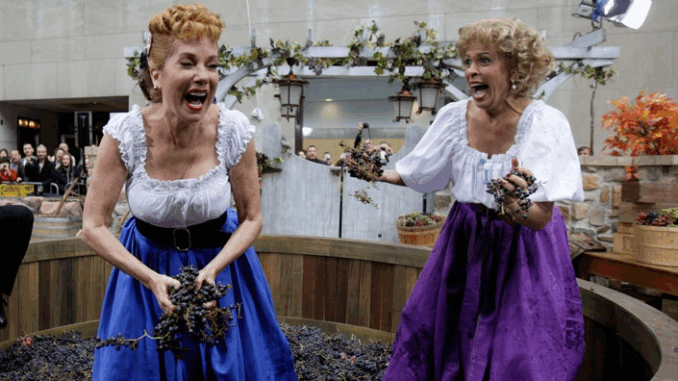
When I Love Lucy entered its second season in 1952, it was already a hit—but what followed would cement its place as an all-time classic and a landmark in television history. Season 2 of I Love Lucy didn’t just maintain the show’s success; it shattered records and defined what American TV comedy could be.
Breaking Viewership Records
One of the most iconic moments of the second season was the episode “Lucy Goes to the Hospital,” which aired on January 19, 1953. This episode was a cultural phenomenon, drawing an astonishing 44 million viewers—an incredible 71.7% of all American households with a television at the time. This remains one of the highest-rated television broadcasts in U.S. history, demonstrating just how deeply I Love Lucy had captured the nation’s imagination.
Iconic Episodes That Still Resonate
Season 2 featured many episodes that have become legendary. “Job Switching,” where Lucy and Ethel take factory jobs, is often cited as one of the greatest comedy sequences ever filmed, showcasing the impeccable physical comedy talents of Lucille Ball and Vivian Vance. The episode’s scene of the two women struggling to keep up with a rapidly moving conveyor belt in a candy factory remains a classic in television comedy.
Other memorable episodes from the season, such as “The Freezer” and “Lucy’s Italian Movie,” continued to blend sharp humor with the lovable misadventures of Lucy Ricardo and her husband Ricky.
Expanding the Show’s Emotional Range
Season 2 also marked a significant milestone in the series with Lucy’s pregnancy and the birth of “Little Ricky.” This storyline was groundbreaking, as it was one of the first times a pregnancy was depicted on American television in a realistic and relatable way. The series managed to balance humor with heartfelt moments, deepening the audience’s connection to the characters.
Behind-the-Scenes Innovation
The success of season 2 was no accident. The show continued to innovate with its multi-camera filming technique before a live audience, which captured genuine laughter and reactions. The impeccable timing and chemistry of the cast, combined with sharp writing, made each episode feel fresh and engaging.
Cultural Impact
The second season solidified I Love Lucy as a cultural touchstone, influencing not only comedy but also American society’s views on marriage, family, and women’s roles during the 1950s. The show’s popularity helped pave the way for the modern sitcom format, setting standards for storytelling, humor, and production that endure today.
Conclusion
Season 2 of I Love Lucy stands as a peak moment in American television history—a perfect storm of groundbreaking episodes, record-breaking viewership, and cultural significance. Its influence continues to resonate, reminding us why I Love Lucy remains a beloved classic decades after its original airing.
